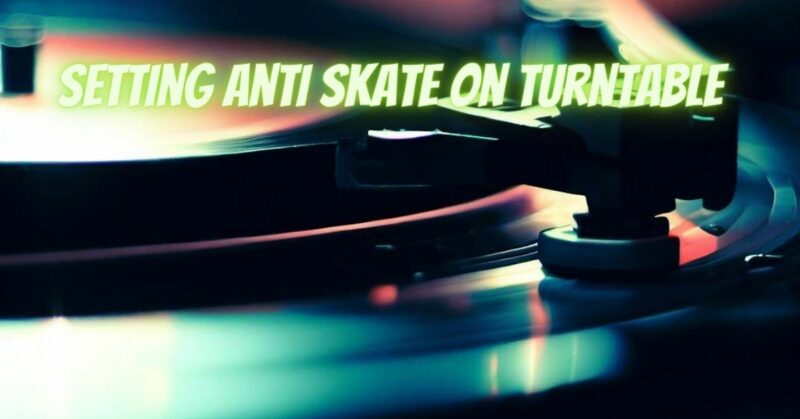The anti-skate adjustment on a turntable is a crucial setting that helps maintain proper tracking and reduces wear on your vinyl records. It counteracts the inward force exerted on the tonearm by the record groove, ensuring that the stylus stays in the center of the groove and prevents distortion. In this article, we will guide you through the process of setting the anti-skate on your turntable to achieve optimal playback performance.
- Understand the Purpose of Anti-Skate: Anti-skate is necessary because the groove of a vinyl record is not perfectly symmetrical. As the stylus travels through the groove, it tends to be pulled inward due to various factors like record imperfections and groove eccentricity. The anti-skate mechanism applies a force in the opposite direction to counterbalance this inward force, keeping the stylus centered and preventing excessive wear on one side of the groove.
- Locate the Anti-Skate Adjustment: The anti-skate adjustment is typically located near the base of the tonearm or on the turntable’s control panel. Refer to your turntable’s user manual or consult the manufacturer’s instructions to identify the specific location of the anti-skate adjustment mechanism.
- Set the Anti-Skate to Zero: Before starting the adjustment process, set the anti-skate to zero or the lowest possible setting. This ensures that there is no additional force influencing the tonearm during the initial setup.
- Balance the Tonearm: Ensure that the tonearm is properly balanced before proceeding with the anti-skate adjustment. If your turntable has a tonearm cueing lever, use it to gently raise the tonearm and position it over the record’s starting point. The tonearm should hover just above the record surface, parallel to the platter.
- Adjust the Anti-Skate: To begin setting the anti-skate, start playing a record. Observe the behavior of the tonearm during playback. If the tonearm tends to drift inward towards the center of the record, increase the anti-skate setting slightly. Conversely, if the tonearm drifts outward towards the record’s edge, decrease the anti-skate setting.
- Fine-Tune the Anti-Skate: Make incremental adjustments to the anti-skate setting and continue observing the tonearm’s behavior. The goal is to find the sweet spot where the tonearm remains balanced and tracks the record groove accurately without excessive inward or outward force.
- Listen for Improvements: While making anti-skate adjustments, listen carefully to the audio quality. Proper anti-skate settings should result in improved channel balance, reduced distortion, and better overall sound reproduction. Fine-tune the anti-skate until you achieve the best possible audio performance.
- Verify with Test Tracks: To confirm the effectiveness of the anti-skate adjustment, play a few test tracks that are known to have challenging sections for tracking, such as passages with strong sibilance or dynamic bass. Listen for any signs of distortion, skipping, or mistracking. If necessary, make further adjustments to the anti-skate setting until the playback is clean and accurate.
Conclusion:
Setting the anti-skate correctly on your turntable is crucial for maintaining accurate tracking and preserving the condition of your vinyl records. By following the steps outlined in this guide, you can properly adjust the anti-skate mechanism to ensure that the tonearm tracks the record groove with optimal precision. Enjoy improved sound quality, reduced distortion, and prolonged record life by taking the time to set the anti-skate on your turntable correctly.


